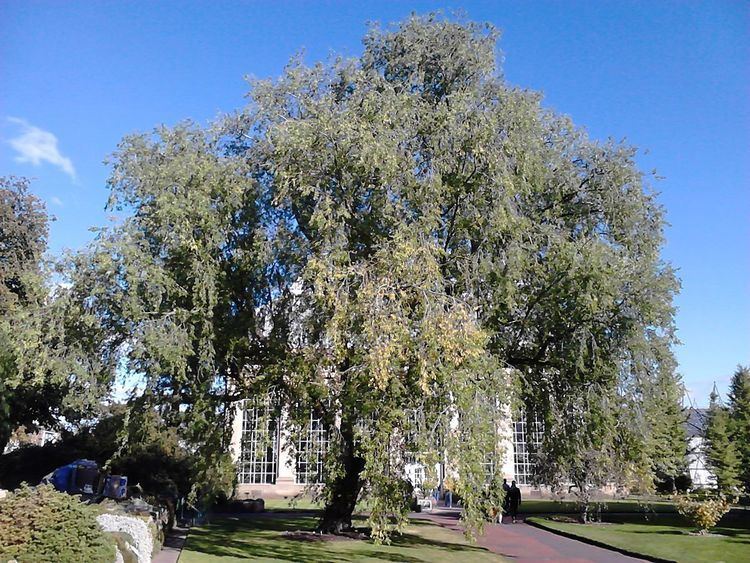Origin Germany Higher classification Ulmus pumila | ||
 | ||
Similar Elm, Ulmus pumila, Ulmaceae, Fraxinus angustifolia subsp pa, Ulmus × androssowii | ||
The Siberian elm cultivar Ulmus pumila 'Pinnato-ramosa', sometimes known simply as the Turkestan elm, was raised by Georg Dieck at the National Arboretum, Zöschen, Germany, from seed collected for him circa 1890 in the Ili valley, Turkestan (then a region of Russia, now part of Kazakhstan) by the lawyer and amateur naturalist Vladislav E. Niedzwiecki while in exile there.
Contents
Taxonomy
Originally named U. pinnato-ramosa by Dieck at Zöschen. In 1908 Litvinov treated the tree as a variety of Siberian elm, U. pumila var. arborea but this taxon was ultimately rejected by Green, who sank the tree as a cultivar: "in modern terms, it does not warrant recognition at this rank but is a variant of U. pumila maintained and known only in cultivation, and therefore best treated as a cultivar".
Elwes and Henry confused the tree, in their Synonymy list, with U. turkestanica Regel, which Regel himself had regarded as "a form of U. suberosa [:U. minor]". The Späth nursery of Berlin treated U. turkestanica Regel as a cultivar distinct from U. pinnato-ramosa and from U. minor 'Umbraculifera', which Green considered Ulmus turkestanica Regel synonymous, naming it U. 'Turkestanica'.
Description
'Pinnato-ramosa' grows very vigorously, and can ultimately make a large tree, however it also has a straggling, untidy habit, producing long shoots 0.60–0.95 m in length. Dieck also described the unusual arrangement of the branch and shoots: 'The branches are organized in a way that each offshoot lies in the same plane as the main branch or stem, like the quill and filaments of a bird feather'. The tree is chiefly distinguished from U. pumila by its greater height and more slender leaves. The leaves, which have pinnate venation, are 4–7 cm in length, ovate-lanceolate, with double-toothed margins, and finely pointed.
Pests and diseases
'Pinnato-ramosa' has not been scientifically tested for resistance to Dutch elm disease, however several old specimens have survived unscathed by the disease (see Notable trees).
Cultivation
Dieck gave several specimens to the Späth nursery, which exported the tree across Europe, and to the USA. Some of these trees still survive, notably in the UK, and North America. Introduced to Croatia from Italy, 'Pinnato-ramosa' can now be found in many places along the Croatian littoral. Also introduced to Australia, the tree was listed by nurseries there (as U. turkestanica) in the early 20th century, but it is not known whether it still survives.
The tree was included in the early stages of the Dutch elm breeding programme, but was dropped owing to the susceptibility of its flowers, which emerge in early February, to frost.
Notable trees
One of three trees labelled Ulmus pinnato-ramosa obtained from Späth in 1902 by the Royal Botanic Garden Edinburgh survives (2016), measuring 15 m height × 82 cm d.b.h. in 2004. A specimen at Mote Park in Kent measured 20 m × 80 cm in 2009. In the USA, a probable 'Pinnato-ramosa' grows in the grounds of the Gillett-Beer Farm, Chicago Road, Warren, a suburb within the Detroit Metropolitan Area; the tree was 45 m tall, with a d.b.h. of 155 cm in 2012. [2]
